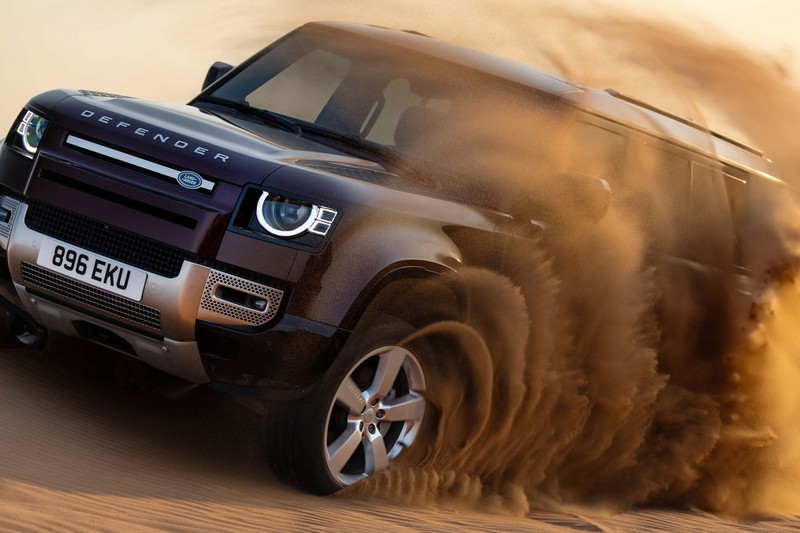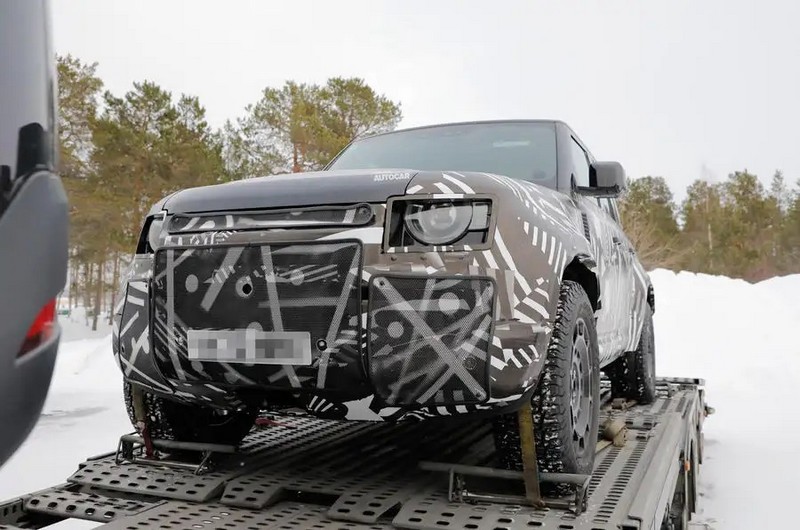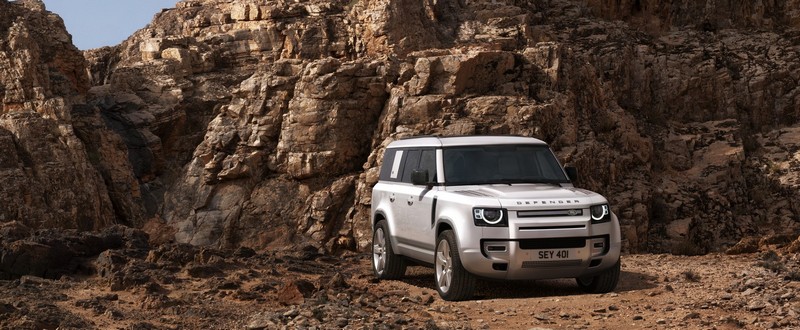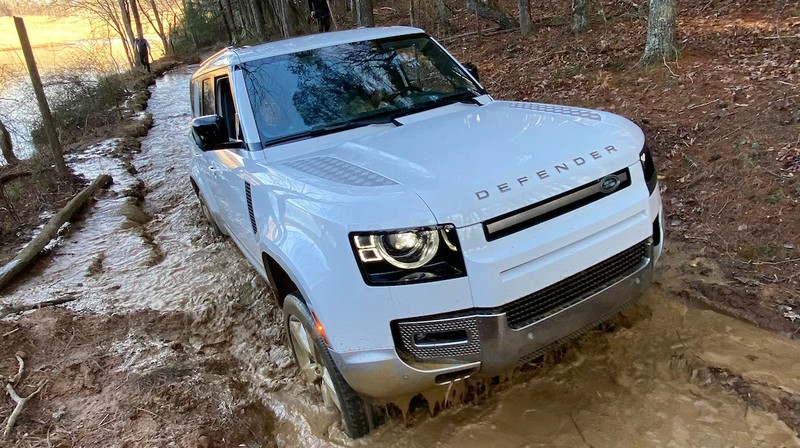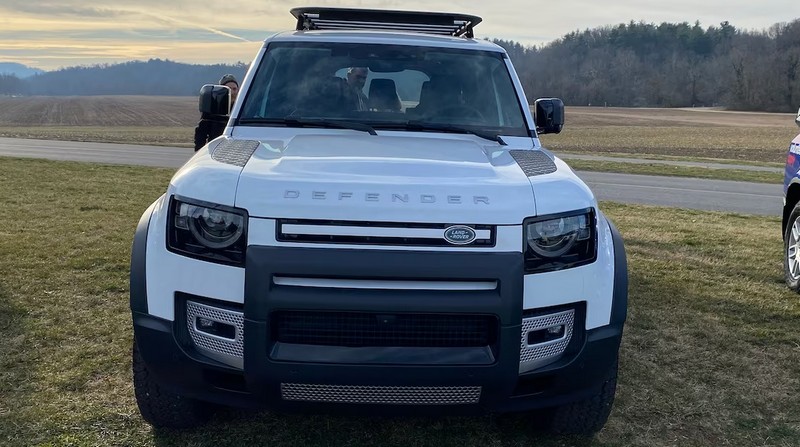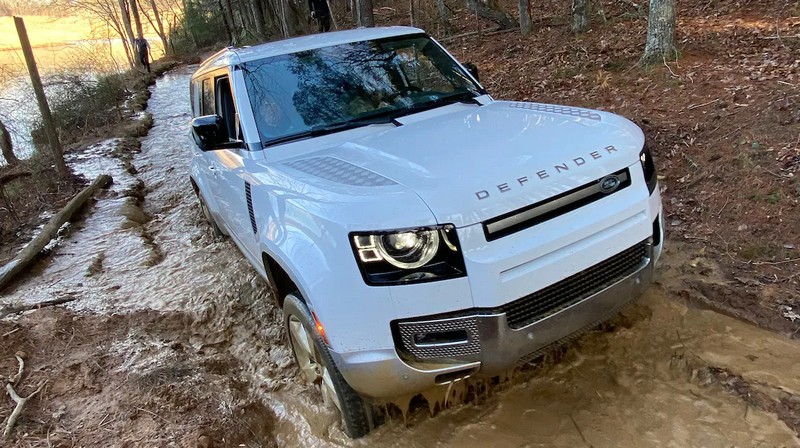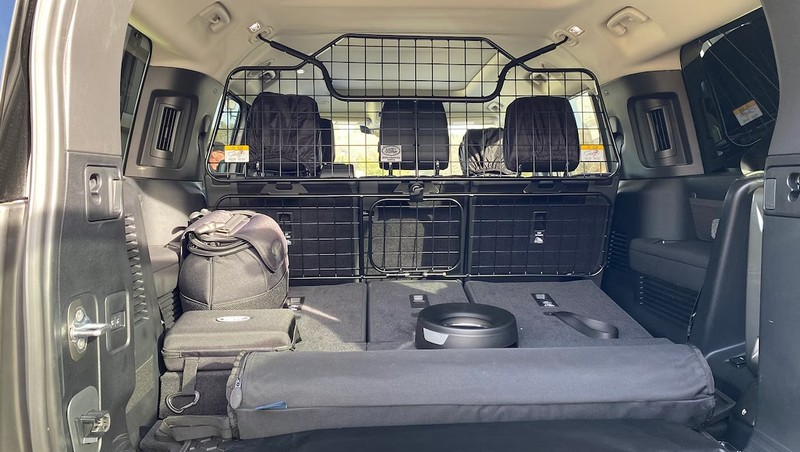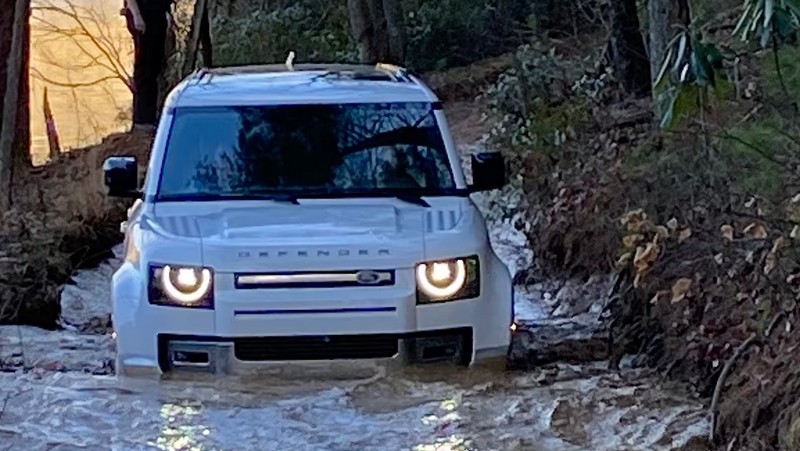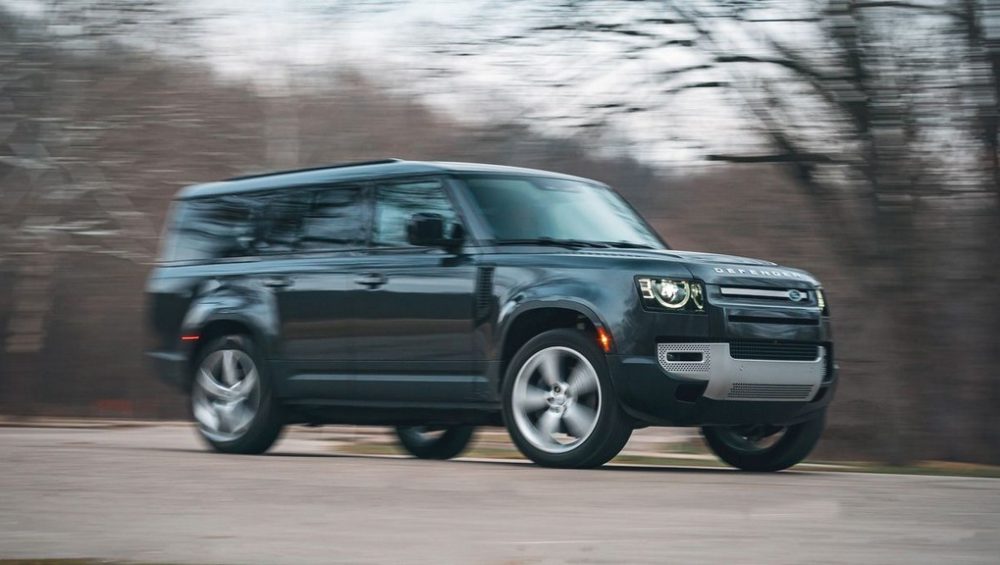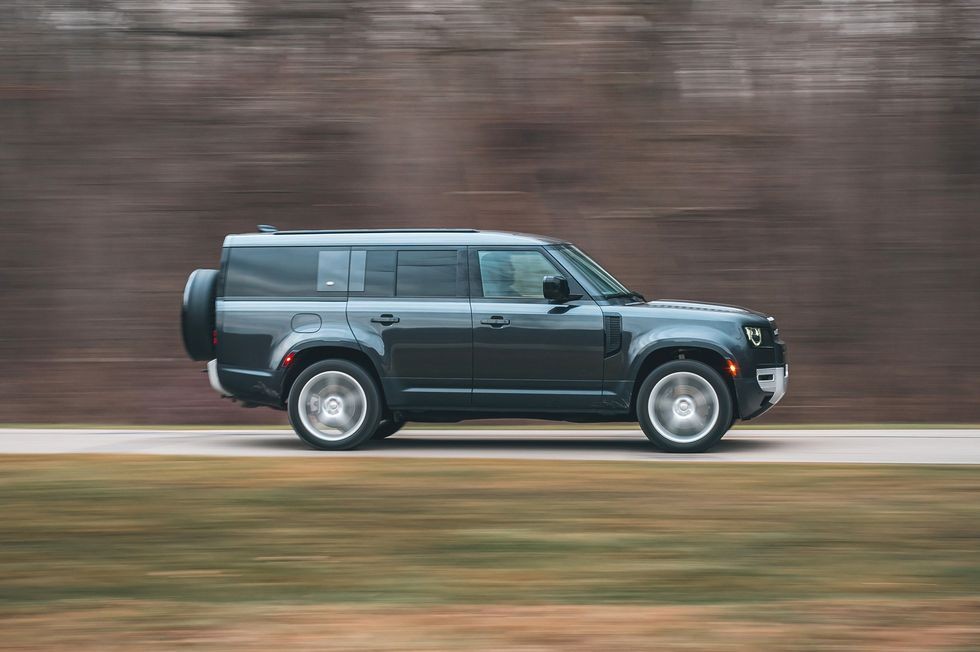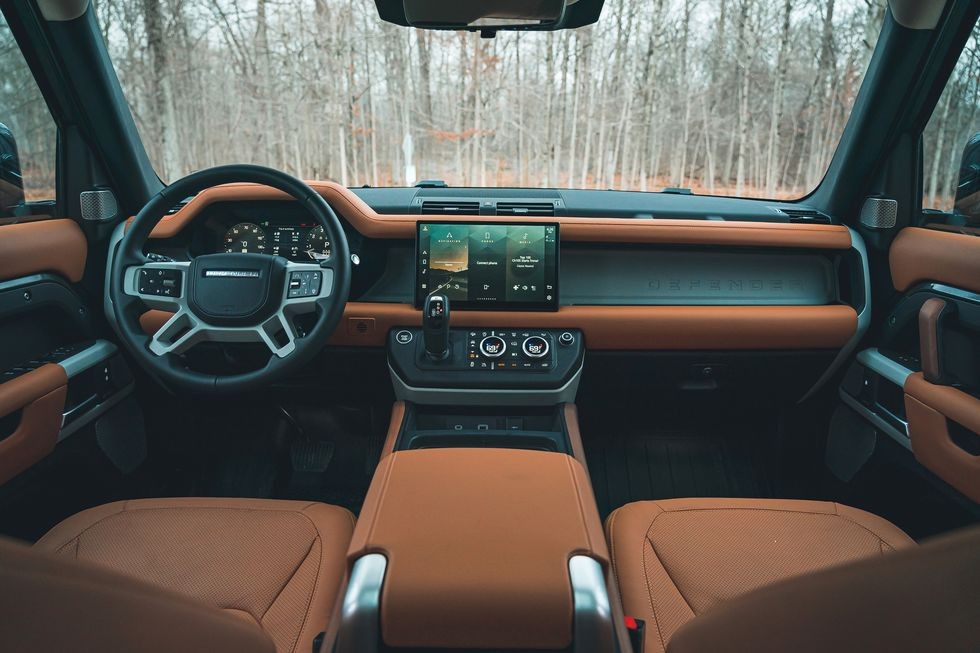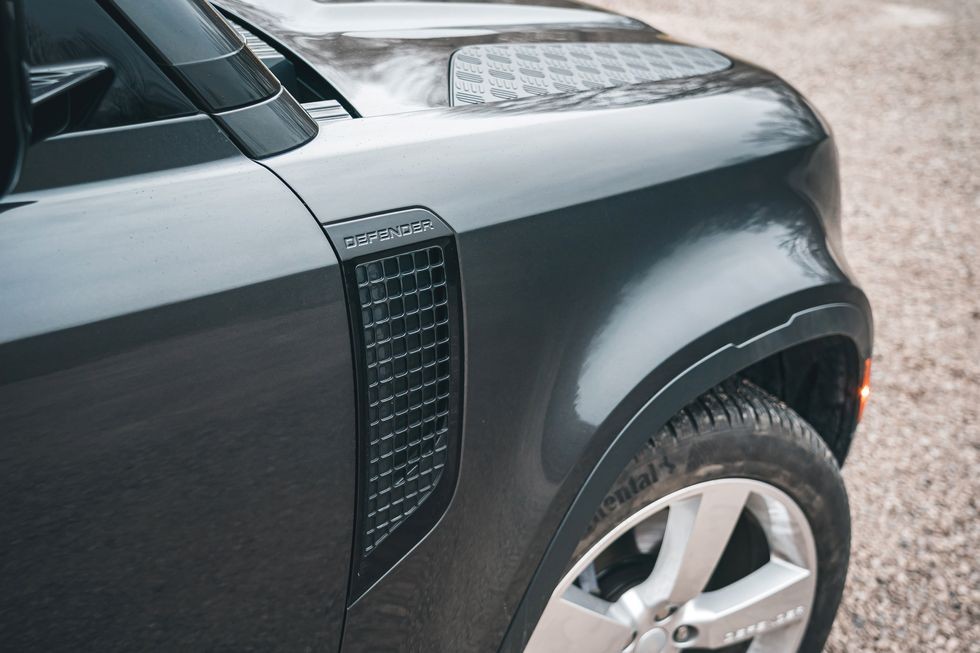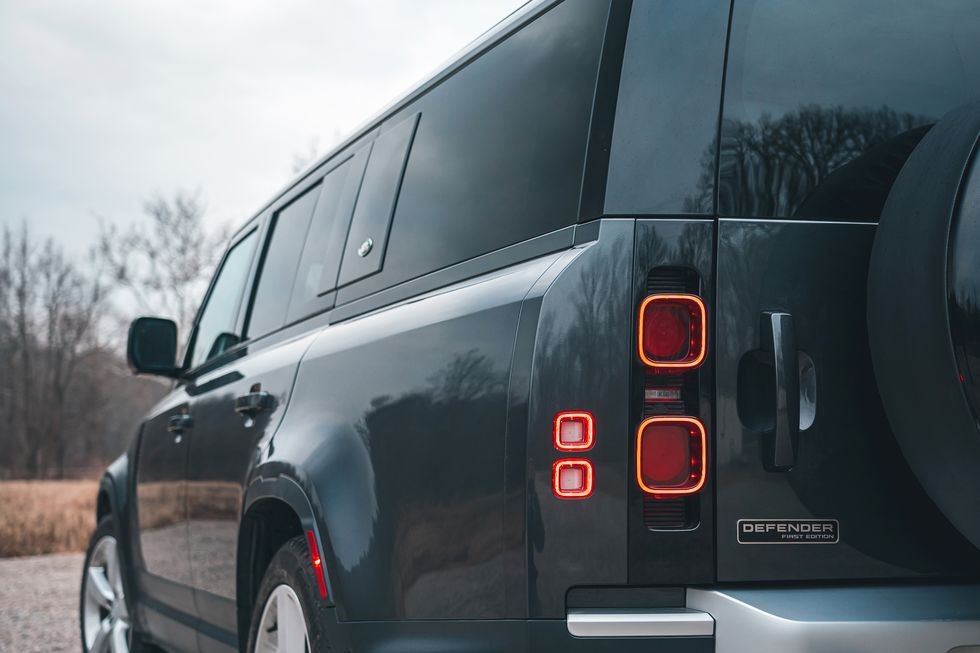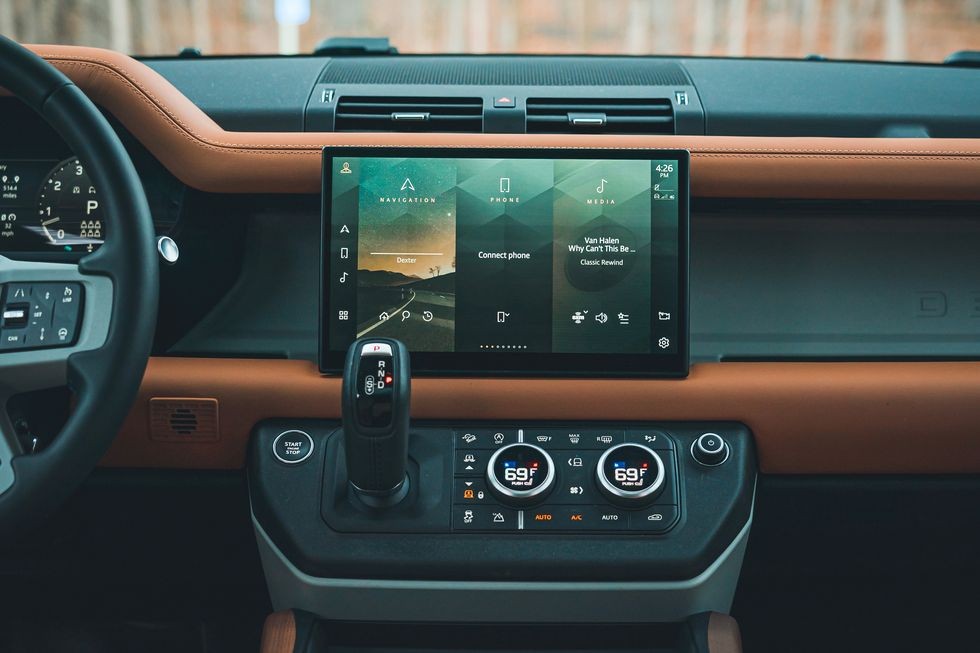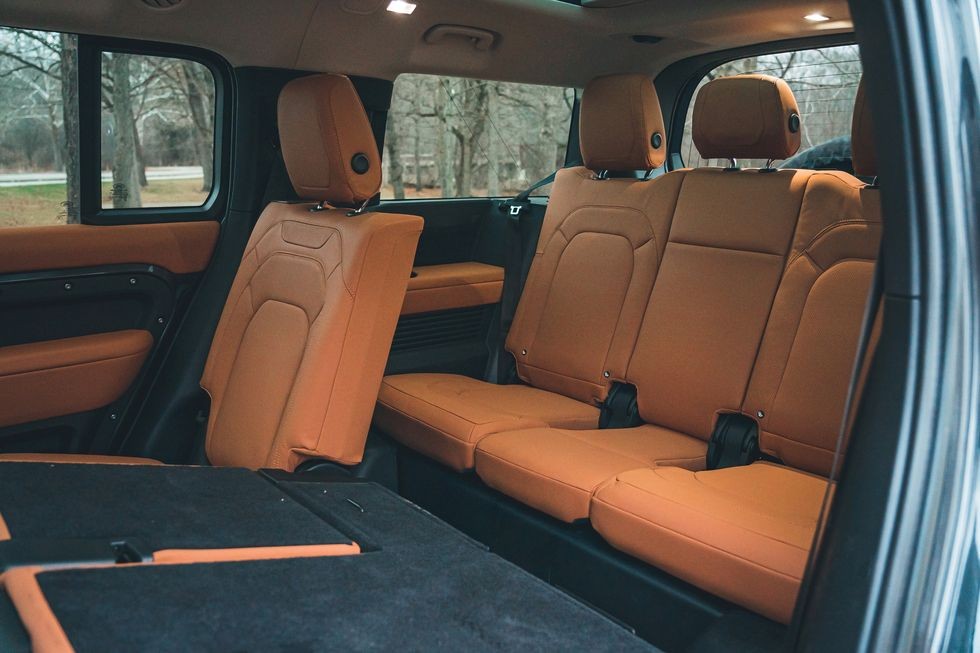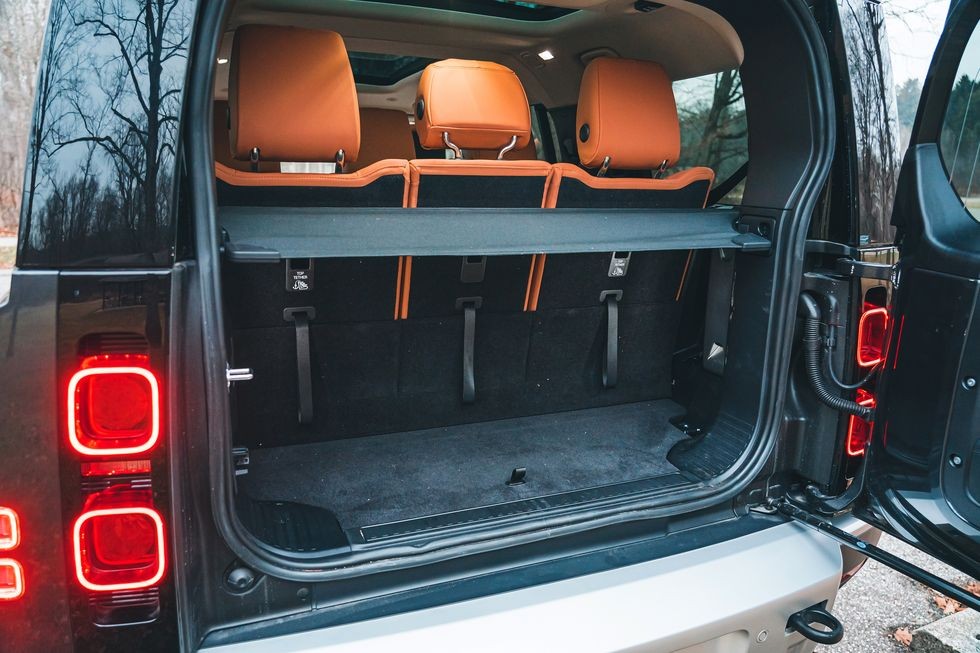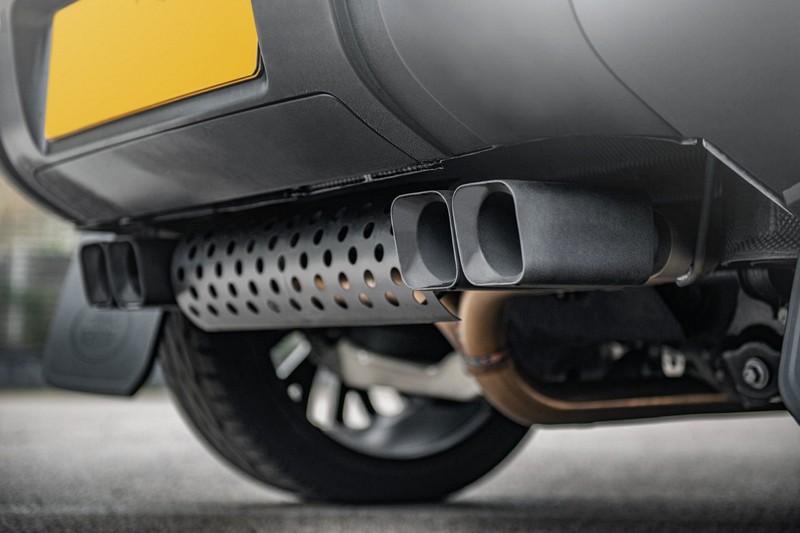The 2024 model, a mightier defender than the last, is a luxury, top-quality, midsize SUV that exhibits its high-performance attributes on and off the road.
With the vehicle’s off-road prowess and superior space, you are sure to have eyes staring till you are out of sight. Driving in this Land Rover gives you the confidence to move around in a comfy and capable vehicle.
Features
The 2024 Land Rover Defender 130 is fully equipped with 21st-century intuitive technologies for all kinds of adventures. It will be available in 5 trims and comes with a color palette scheme. The technology is updated regularly to guarantee visibility, convenience, and connectivity.
There are also unique, precise details like the wood veneer and noble chrome materials that elevate the design intensity even further. The expansive touchscreen on the center dash has increased brightness and shows an extended portion of the route ahead while navigating.
A panoramic sunroof allows the natural light to bathe the front seats when it slides open. The other glass roof, which is special to only this model, ensures that occupants of the third-row experience the same authentic feel of the Defender vehicle as everyone else in the Land Rover.
The finishing touches in the interior come in a variety of options, which also include light oyster-perforated Windsor and vintage van leather. The cushion width and legroom of the third row are greater than any other seat rows in the vehicle, having cup holders, USB-C charging ports, and armrests. There’s even more room for passengers and cargo in the third row.
The Engine and Performance
The 2024 Land Rover Defender 130 V8 has mild-hybrid engines and standard equipment.
Land Rover’s new model is powered by a twin-turbocharged V8 engine fitted with off-road upgrades that deliver about 600 horsepower. It uses a 5.0-liter displacement engine to sprint from 0 to 60 mph in 4 seconds. It might crawl in corners, but there’s no stopping on straightaways, with a departure angle of 28.5 degrees.
Although it is slightly lower than the Defender 110’s 40-degree departure angle, it still has a competitive edge among its off-roading rivals. This model also features an exhaust with quad tips made from titanium, raised suspensions, wide wheel arches, and mud flaps.
The Defender is built to smoothly handle all sorts of terrains owing to its off-the-road capabilities and on-road natural performances. It takes you confidently and carefully from urban jungles to sand-shifting terrains and finally scales you successfully through an icy environment, thanks to its accessory packs; the explorer pack, the country pack, the adventure pack, and the urban pack.
The Defender 130 also offers a four-zone climate control system for cooling and heating the vehicle in these zones, independently operated for the three rows of seats.
The Exterior Styling
The exterior styling doesn’t fall below your expectations considering the luxury of the Defender 130. Its unique silhouette displayed throughout the vehicle’s smooth bodywork is no match, an immediate indicator of all the characters the Defender can perform.
This new Defender features huge fender flares and wider flares. There are also massive air intakes and more lightweight components owing to the size of this beauty, with the air suspension being standard. Defender is styled with the toughest materials created for optimum durability, but it also has its own limits.
The lightweight wheels come in huge sizes of 20 inches, which only means that the brakes are larger for reliable control on the wider track. The spare wheel covers are body-colored, which improves the deliberate and cohesive aesthetic design.
Its vertical length, from the tip to its spare wheel, measures up to 5,358 mm, making it impossible to overlook. At the same time, the wheelbase has the same measurements as the five-seater Defender 110 model, which is 3022 mm.
The LED lights are boldly placed at both the front and rear of the vehicle, with extra illuminators. The word “defender” is also inscribed on the front bumper, in all caps, screaming exclusivity. You can also find the Land Rover symbol below it and at the side.
The Interior Design
The 2024 Land Rover Defender 130 is an eight-seater, having three rows of seats in a two-three-three setup, offering the occupants unrivaled comfort.
The second and third rows of seats will be folded down. With this arrangement, the entire body length of the Defender 130 boasts 80.9 cubic feet of cargo space, which is a lot of space. The roof will also have a load limit.
According to Land Rover, the cabin offers an extra length of 34 centimeters, surpassing the Defender 110 by 13.38 inches, which increases cargo capacity and passenger space, implying that there will still be a reasonable amount of cargo space even when all seats are occupied. With this space, you can confidently fit in a complete entertainment set.
Speaking of the infotainment system, this model is exclusive to the 11.4-inch touchscreen in the center dash. Control buttons will also be on the door panels, center dash, and steering wheel. You can configure the center console at the front to your style, either with or without a refrigerator.
The interior compartment will be wrapped with leather-free and wood appointments and can be customized to suit the customer’s demands on both material and color. The leather-free material engaged is a new one Land Rover calls “resist.” It is also used for carpet mats, and luxury carpeted cargo spaces.
It has a low carbon footprint compared to other leather alternatives used in previous models. The resist material has been tested and shown to have extreme durability, a soft feel, a fine grain appearance, and is easy to maintain.
The Price
The base price starts at $69,350. The actual cost for a fully equipped Defender 130 Land Rover comes to $86,750, and this is without the additional upgrades that make the vehicle more luxurious.
If you then decide to add the cost of a few upgrades, you will easily come down to a six-figure price. Of course, a V8 is the most expensive, but it is worth its price.
Pros
- Excellent handling and performance
- Luxurious body style
- Amazing off-road capabilities
- Luggage can easily be offloaded
Conclusion
Starting from its intentional stance to its sophisticated, precise surfaces, everything concerning the 2024 Defender 130 exudes brilliance.
The 2024 Defender 130 combines function and form, capability and space, to achieve an imposing presence. Even looking at the exterior styling alone, the vehicle demands ultimate attention on and off the road.
Photo Gallery
[ngg src=”galleries” ids=”94″ display=”basic_thumbnail” thumbnail_crop=”0″]

